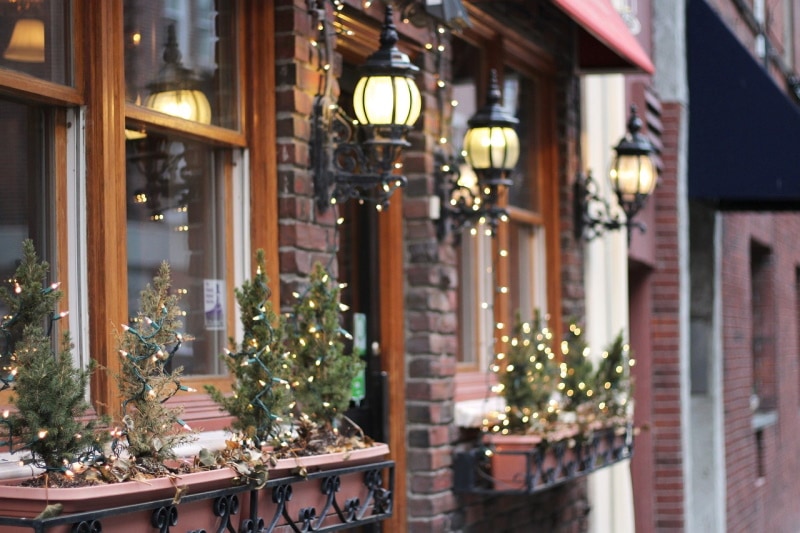How to Hang Christmas Lights Around Windows (4 Easy Tips)
-
Codee Chessher
- Last updated:

Hanging Christmas lights is an art that nobody really thinks about until it’s their responsibility, and it can be especially hard if you’re putting up lights for the first time. The good news is that hanging lights around your windows during the holidays doesn’t have to be a hair-pulling experience. With some careful planning, you can have your house lit up like you hired pros to do the work. Let’s dig into what you need and how to go about it.

The 4 Tips to Easily Hang Christmas Lights Around Windows
1. Plan It Out
Don’t be the one putting their lights up on Christmas Eve in a panic because you forgot. Take a tape measure and measure around the perimeter of your home, even if you’ve done it before. Write these measurements down, as well as how high, wide, and tall your windows are. These latter figures may be important if you have limited lights or wires to work with.
While you’re measuring, have a rag handy to wipe down your window frames if you intend on using adhesives to secure your lights.
2. Test Your Lights Before Hanging Them
It should go without saying, but definitely test your lights before you hang them up. If you need to replace a strand after, well, we wish you luck.
Methodically untangle and plug each strand of lights in, then lay them out neatly for later. Even if you’re reusing last year’s lights, chances are that at least a few bulbs need to be replaced. Have some replacements handy and screw them in as needed.

3. Choose Your Mounting Method
There are numerous ways to hang Christmas lights, and everyone has their preferred method. Also, some methods may work better for certain types of homes. Let’s briefly go over the most popular ways to hang and secure Christmas lights around your windows.
- Siding Staples: If you have a nail gun handy, using siding staples to secure your lights is super easy, but the staples are a pain to remove at the end of the year.
- Gutter Hooks: For higher windows that cut across gutters, gutter hooks are the easiest way to hang Christmas lights without causing wall, window, or gutter damage.
- Wire Suckers: These easy-to-use suction cups stick right to your window or frame, and then you secure your lights by looping the wire around the cups. They come off sometimes, especially during rainy weather, but are simple to remove later.
- Cup Hooks: Very popular for their ease of use, cup hooks screw into your exterior walls to give you spots to fasten your lights. You may have used these to fix sagging light strands in the past, and that’s because they’re one of the best choices for the job.
- Adhesive Light Hooks: These are less secure than other methods above but are easily applied and removed. You’ll need your window frame clean for these to stick well. Have some extras handy in case they lose their grip and fall off.
4. Hang Your Christmas Lights
In between straightaways outside your exterior walls, install your chosen mounting tools 2 to 3 inches outside the window’s outer edge. This will prevent damage in case you’re screwing and give you some more flexibility when removing them. If possible, use cup hooks to fill in any gaps where the light strands might be sagging.
Start at the bottom edge of the window and tautly unwind your wire while working your way up the side, affixing wire where necessary. If the wire is starting to sag a bit, it’s a sign you need another fastener. Depending on the length of your light strands, you can use a single strand for the whole window, or multiple shorter strands to make organizing them easier.
If you have a second or third-story home, be extremely careful. Have someone on the ground hold the ladder steady while you work on your upper windows or use a safety harness if you’re actually on the roof. Falling off the ladder while hanging your Christmas lights might be a funny gag in movies, but in real life, it can be fatal. Don’t leave your safety to chance when hanging up your lights this holiday season!


Conclusion
Hanging Christmas lights around windows can be daunting if you’ve only ever done a basic light perimeter outside your house, but it’s not as hard as you’d think. The most essential steps are to measure your windows, test your lights, and choose the right mounting tools. Once that’s out of the way, you can have the lion’s share of it done in a few hours.
Featured Image Credit: Maria Mikhailenko, Shutterstock
Contents

